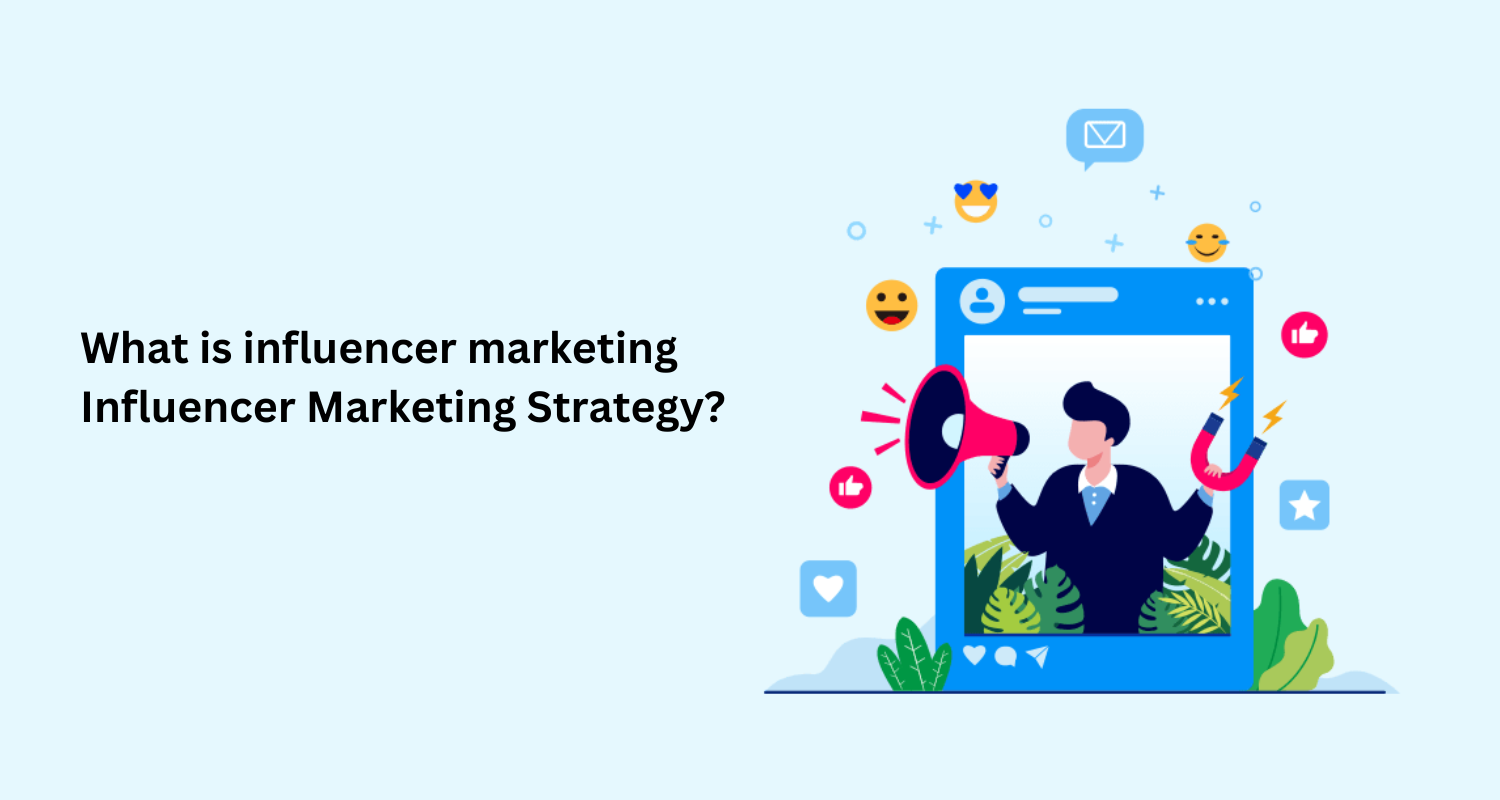What Is Influencer Marketing: Influencer Marketing Strategy?

Mithun Patra
- 24th January 2024

Influencer marketing can be said as a sort of social media marketing strategy that uses endorsements and merchandise mentions from influencers–individuals who have a large, engaged social following and are viewed as experts within their niche. Influencer marketing works due to the high amount of trust that social influencers have built up with their following, and suggestions from them work as a sort of social proof to your brand’s potential customers. As well as these influencers also work as a Key Opinion Leader (KOL).
And except these marketing jargon if you want to look in a simple way then when you see Beats by Dre, which is owned by Apple now, you might wonder why it was so popular. It is because every single celebrity, from LeBron James to the Kardashians, appeared in TV commercials saying: “Hey, you have to wear these headphones. They’re cool. We all wear them.”
That’s influencer marketing.
Who are influencers?
Influencers are those who have built a reputation for his or her knowledge and expertise on a particular topic. They create content about that topic on their preferred social media platforms and create a large following of enthusiastic, likeminded people who pay close attention to their views.
Type of influencers
In the world of social media influencers, you can separate different types of influencers in multiple ways. Some of the most common methods are by the online platforms, by follower numbers, by types of content, and by the level of influence. You can also group influencers by the niche or category in which they operate. This means that influencers who may appear in a very low category by one measure may seem more influential when looked in a different way. for example, many mega-influencers are also celebrities. Yet both these groups often have less real influence on their audience as they may lack expertise in a dedicated narrow niche. Some micro influencers and even nano-influencers can have a tremendous impact on followers in their specialist niche. They may be of significant benefit to a firm selling a product targeting that sector or potential customers.
How to create a successful influencer marketing campaign
Since influencer marketing is a discipline all its own, you would like a couple of unique components to create an influencer campaign. Here are few steps that can help you to build your influencer campaigns:
Planning Your Influencer Marketing Strategy
Finding influencers & Selection
Program Workflow and Automation
Monitor & Track Key Metrics
Optimized Distribution
However, before you start looking for influencers or create a strategy, you need to determine a few key things to help set the stage. You’ll need to know your audience, set a clear goal, and define how you will measure success.
KNOW YOUR AUDIENCE
A common mistake brands and agencies make is to make a decision first the type of influencers they would prefer to work with. We recommend to step back and look at your audience. Who are you trying to reach? Who is the targeted audience for your message?
SET CLEAR GOALS
Many of the common goals for influencer marketing campaigns are: Brand Awareness, Get people to try your products or services, Gain Social Media followers, and Increase sales.
DEFINE HOW YOU’LL MEASURE SUCCESS
The last key ingredient is how you plan to measure success of your influencer program. These often roll up to higher level marketing goals or key performance indicators (KPIs) you want to achieve. By setting up the proper tracking methods you’ll be able to identify where a consumer is in the decision journey. i.e. Awareness, Purchasing decisions, Preference, or Loyalty.
Key Components of Influencer Marketing
1) Planning Your Influencer Marketing Strategy
Developing a successful influencer marketing strategy takes careful thought and planning before executing. To get started you need a workbook that contains helpful worksheets and examples that will lead you through the process to build influencer marketing plans.
2) Finding influencers & Selection
Depending on budgets and scope of your campaign you need to identify influencers to work on your campaigns. For personalized and customized campaign, shortlist the right social media influencers after analyzing their engagement rates, followers base, performance metric, past campaign performances, percentage of spam. Analyse, research and match the followers’ / avg. viewers’ interest of the influencers i.e., the target audience of the influencers with the target audience of your brand for maximizing the ROI.)
3) Content Collaboration and Campaign Workflow
The key to any great Influencer Marketing campaign is creating a great content. Content that compels to its audience, authentic to the storyteller’s voice, and talks about your brands objectives. If even one piece of this equation is missing, the content will fall through. So how will you create great content?
One way this can be done is by giving an experience to the influencers that they won’t be able to stop talking about. Experiences provide the creative inspiration influencers crave, and also align nicely with your brands message since you control the atmosphere.
4) Optimized Distribution
Using influencers to create content that will connect the right audience is the main purpose of any influencer marketing strategy. But it doesn’t just stop with the content being shared on their site, or across their social channels. So, what else can you do with it? Build a content strategy to increase its usefulness over your whole marketing strategy. Use influencer content in quotes and testimonials. You can also share your content in a dedicated section of your brand newsletter.)
5) Monitor & Analytics
To monitor or analysis the engagement an influencer brings to your brand, track these sorts of engagements:
Clicks: Clicks measure the interest level of your audience, but you also need to have a decent balance of clicks, likes, and shares.
Likes: Likes will generate more buzz around your content and may boost your content’s ranking on social platforms, too.
Shares: Shares indicate quality. If people recommend your content to their friends and family, they can also recommend your products and services, too.)
When you run an influencer campaign to get engagement, track engagements to measure your campaign’s ROI.
Comments: A high number of comments on influencer posts indicates that your customers or potential customers just like the post content.
Brand mentions: Mentions are an excellent KPI because you recognize your content is being discussed and your brand amplified.)
Different methods can also be used to measure your success: –
- Create unique coupon codes to track sales.
- Give each influencer an affiliate link.
- Use UTM parameters.
“You want to have a good tracking system in place by giving the influencers you work with a unique link,” says Jonathan Aufray of Growth Hackers.
- Create personalized landing pages for each influencer.
Benefits of influencer Marketing
Collaborating with influencers is a number one marketing strategy for many brands. The answer for why influencer marketing works includes these benefits:
- Reach a large number of target audience.
- Build trust for your brand.
- Grow your social following.
- Increase site traffic.
- Get more leads.
- Drive sales)
Mistakes in influencer marketing strategies
One of the biggest mistakes that traditional media makes is a failure to understand the difference between celebrities and online influencers.
It is also important to understand that it’s the influencers who have built a keen and enthusiastic audience. it’s not accidental that these people follow influencers, not the brand. actually, the audience doesn’t care less about your brand. They only care about the opinions of the influencers, as they work as a KOL (Key Opinion Leader). Don’t attempt to foist rules and business practices onto an influencer. The audience is theirs, and they can simply walk off, taking their followers with them.

